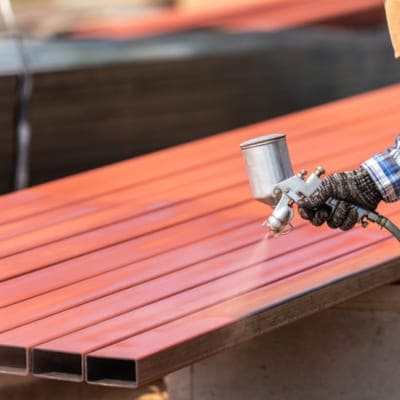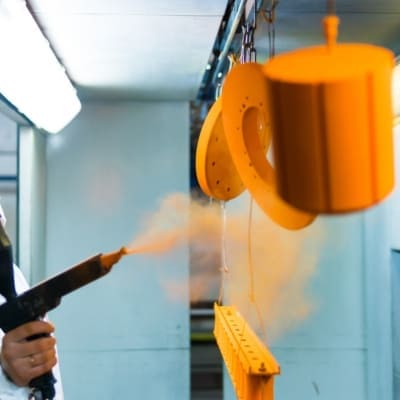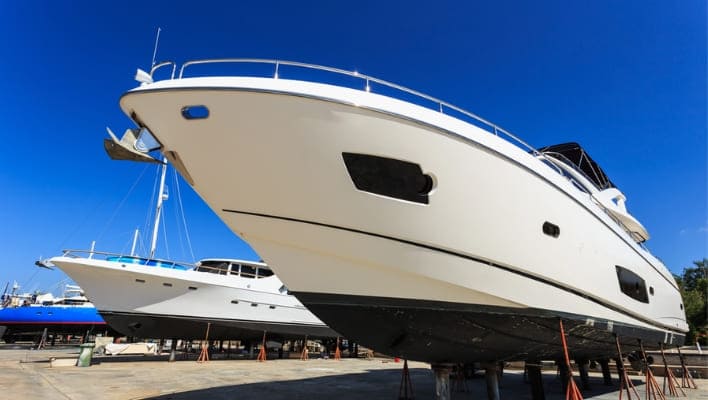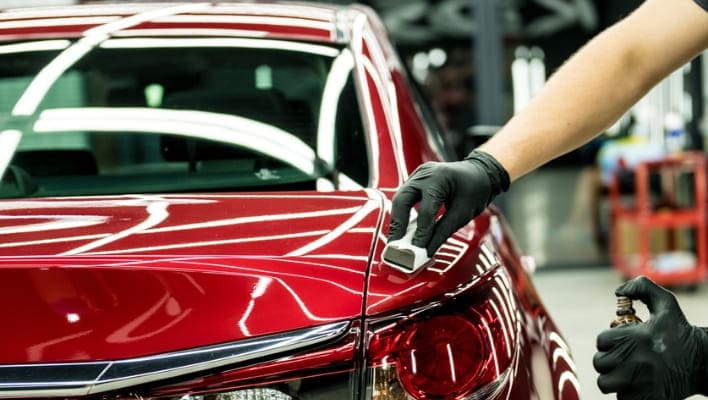Powder coating serves as a strong shield, safeguarding products from environmental elements. Its strength and environmentally friendly characteristics make it a popular option. However, over time, it may face scratches or damage. So, can you paint over powder coating to give it a fresh look or added protection?
Yes, you can successfully painting over powder coating with proper preparation and right steps. I’ll break down what you need to know in simple terms – how to paint over powder coating for the best results.

Table of Contents
- spray paint over powder coating
- What is powder coating?
- Powder coating vs Paint
- How to paint over powder coated?
- Step 1: Surface Preparation
- Step 2: Primer Application
- Step 3: Selecting the Best spray paint for powder coated metal
- Step 4: Applying the Paint
- Step 5: Curing and Drying
- What I Like and Dislike About Powder coating
- What will remove powder coating?
- Chemical Stripping:
- Thermal Stripping:
- Abrasive Methods:
- Laser Removal:
- What is best solvent for Removing powder coating?
- Conclusion:
- FAQS
- What happens if you paint over powder coat?
- Can you recoat over powder coating?
- How many years does powder coating last?
- Martina Hitchcock
spray paint over powder coating
When considering paint over powder coating, it’s essential to choose a paint that not only matches the appearance but also offers protection against rust, weather, and scratches, similar to the qualities of powder coatings. Before applying paint, inspect the condition of the powder coat, addressing issues such as rust, chips, or uneven coats. Adequate surface preparation is key, and in cases of significant damage, sanding or sandblasting may be necessary.
Potential difficulties may arise, particularly concerning the adhesion of the new paint and achieving a coating performance that matches the original. Powder coatings often create smooth surface, posing difficulties for liquid coatings to bind effectively. While achieving the exact performance of the original powder coat can be challenging, selecting a liquid coating with similar characteristics is important.
Considerations also include the integrity of the powder coated surface. If substantial portions are missing, it’s advisable to remove the remaining coating through methods like sandblasting. Additionally, address any rust before painting, with sandblasting being a preferred option for higher oxidation levels.
What is powder coating?
let’s talk about what powder coating actually is. Instead of liquid paint, it comes as a dry powder. It works well on metals like aluminum and steel and also on other surfaces. This special paint mix includes things like resins, fillers, and pigments, creating a strong finish. To apply it, you use a spray gun with air. When it dries, everything in the coating sticks together, giving you a solid painted surface. There are different types of powder coatings, like epoxies, polyesters, and others. I often used special booths when applying powder coating.
Powder coating vs Paint
Powder coating and paint are both methods of applying a protective finish to surfaces, but they differ in their application and characteristics. Unlike paint, powder coating doesn’t use solvents, making it environmentally friendly. Additionally, powder coats have longer-lasting colors compared to many paint finishes. Another benefit lies in the ability to collect and reuse powder overspray, effectively minimizing material waste.
Powder coating offers a more even coverage and avoids issues like dripping, which can occur with paint, potentially leading to an inferior finish. Unlike painting, powder coating doesn’t require extensive sanding for a smooth surface. Instead, it is applied quickly and efficiently through an electrostatic and heating process, making it a preferable choice for various applications.
How to paint over powder coated?
Spray painting over powder coating can be done in easy steps outlined below.

Step 1: Surface Preparation
Begin by cleaning the powder-coated surface thoroughly with a mild detergent and water to eliminate dirt, grease, and contaminants. Once cleaned, use fine-grit sandpaper or a sanding sponge to lightly scuff the surface, promoting adhesion by creating a slightly rough texture.
Step 2: Primer Application
Apply a high-quality primer after preparing the surface (metal). Ensure compatibility with both the existing powder coating and the chosen paint. The primer enhances adhesion and provides a smooth base for the paint.
For priming over powder coat, consider the following options:
1. Zinsser Bulls Eye 1-2-3 Primer Sealer:
Recommended for priming over powder coat, follow the manufacturer’s instructions for application, allowing a minimum of 1 hour drying time under normal conditions.
2. Dulux Weathermax HBR Line:
Dulux, a respected protective coating manufacturer, offers the Weathermax HBR line designed for use with powder coil coating.
3. Luxepoxy 4 Primer (for aluminum surfaces):
When painting over powder coating on an aluminum surface using Weathermax HBR, a suggested primer is Luxepoxy 4 White Primer according to Dulux.
4. Durebild STE Primer (for steel surfaces):
Dulux recommends Durebild STE primer for powder coating on steel surfaces with Weathermax HBR.
Step 3: Selecting the Best spray paint for powder coated metal
People often ask, what paint will stick to powder coat?
I suggest you to choose a paint which is specifically formulated for your desired surfaces and, if possible, one that bonds well with powder coating. As per my experience, you can use acrylic, enamel or epoxy-based paints for their durability and adhesion properties.
Step 4: Applying the Paint
Once the primer has dried, apply the selected paint carefully using a high-quality brush or spray equipment. Follow the manufacturer’s instructions for drying times between coats. You should apply several thin coats instead of a single thick one.
Note: Learn quick steps for painting over spray painting in this detailed guide!
Step 5: Curing and Drying
Allow the painted surface to dry thoroughly and cure completely. This step is vital to ensure the longevity and durability of the newly applied finish.
What I Like and Dislike About Powder coating
| Advantages of Powder Coating | Disadvantages of Powder Coating |
| Durable Finish | Initial Setup Costs |
| Environmentally Friendly | Limited Color Choices |
| Resistant to Chipping and Fading | Thickness Limitations |
| Uniform Coating | Not Suitable for Thin Coatings |
| Economical over the long term | Difficult to Touch Up |
| Reduced Health and Safety Risks | Energy-Intensive Process |
| High Resistance to Chemicals | Complexity in Removing Coating |
What will remove powder coating?
To remove powder coating, consider these methods:
Chemical Stripping:
Apply a powder coating-specific paint stripper, follow instructions, and remove softened coating with a scraper or abrasive pad.
Thermal Stripping:
Heat the object until coating bubbles, then use a scraper or wire brush to remove the softened coating, taking care with sensitive components.
Abrasive Methods:
Use techniques like sandblasting or media blasting to physically strip the powder coating.
Laser Removal:
Use laser technology for precise removal, suitable for intricate or detailed surfaces.
What is best solvent for Removing powder coating?
Paint strippers like Klean Strip or acetone are commonly used for powder coating removal, it’s essential to note that the effectiveness can vary depending on the specific type of powder coating and its application.
Conclusion:
In summary, painting over powder coating is a practical way to update surfaces. It involves thorough cleaning, using a suitable primer and paint, and applying multiple thin coats for durability. The process, though requiring attention, is a cost-effective means to refresh the appearance of metal surfaces, offering a fresh and vibrant look without the need for replacement.
FAQS
What happens if you paint over powder coat?
When painting over a powder-coated surface, the smooth finish poses a challenge for paint adhesion. However, proper preparation, including thorough cleaning, light sanding for texture, and using a metal primer, can enhance adhesion and improve the quality of the painted finish.
Can you recoat over powder coating?
When recoating over an existing powder coating, compatibility is crucial for a successful outcome. It’s advisable to assess the condition of the old coating – if it’s in good shape, cleaning, light abrasion, and applying a compatible primer can be sufficient. However, if the existing coating is damaged, it’s best to remove it entirely.
This can be achieved using techniques such as sandblasting or chemical stripping. Ensuring compatibility between coatings and following proper application procedures is essential for a durable and effective finish. This approach minimizes the risk of adhesion issues and promotes a successful recoating process.
How many years does powder coating last?
The lifespan of powder coating typically ranges from 30 to 40 years or more, contingent on factors like substrate type, application quality, and environmental conditions. Proper surface preparation and maintenance, along with resistance to weather and chemicals, contribute to its durability.
While powder coating generally outlasts traditional liquid coatings, exposure to harsh elements and physical abrasion can impact its longevity.

Martina Hitchcock
Martina Hitchcock is a versatile author with expertise in different fields. As a paint sprayer expert, she has in-depth knowledge of paint spraying techniques, tools, and equipment. Martina is also an experienced home remodeler who has worked on various projects, including kitchen and bathroom renovations, flooring installations, and room additions. Her knowledge of home improvement and remodeling is extensive, and she enjoys sharing her insights and tips with readers. You can follow her on Facebook.


